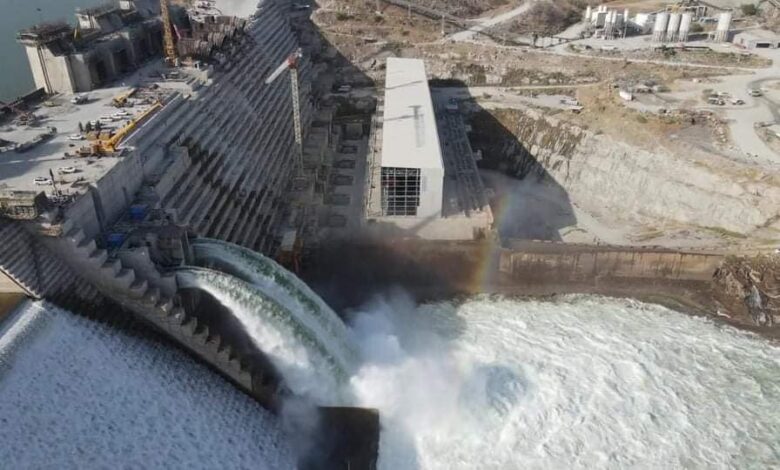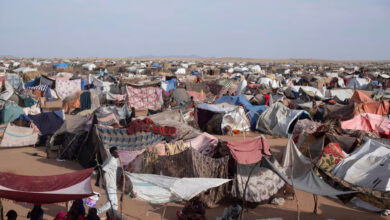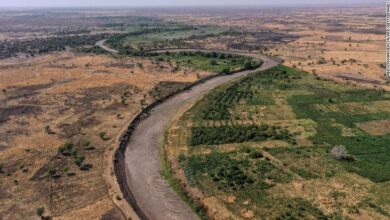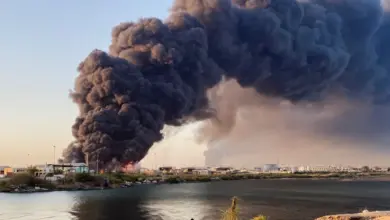
The international committee of experts formed by Egypt, Ethiopia and Sudan to study the Grand Ethiopian Renaissance Dam in 2013 have recently questioned the safety of the dam.
Hany Sweilem, Academic Director of the Water Department at the German University of Aachen, said, confirming that the Saddle Dam (the auxiliary or complementary dam for the Renaissance Dam project)’s structure has cracks.
Sweilem added, during a phone call to the “Al-Hekaya” program, presented by Amr Adib, on MBC Masr satellite channel, on Monday evening, that the Ethiopian dam consists of two parts, the first of which is the concrete part, and the second is a dam with a length of five kilometers .
He pointed out that the construction of the dam was completed two years ago, adding: “Anyone who accesses the Google Earth app and compares the images of the dam in 2020 and 2022 will find cracks as wide as the walls of the dam facing the water it receives.”
Sweilem stressed the seriousness of the situation if the water level reached 595 meters, with the continued existence of those cracks, adding at the same time, that he could not confirm whether the dam would collapse, simply by relying on satellite images.
Sweilem said he does not wish the dam to collapse in order to preserve the Ethiopian money and protect the Sudanese and Egyptian peoples.
“The company is required to come out and say the cause of the cracks, and I challenge anyone from the company to completely deny the existence of cracks in the dam. If the water level rises to 595 meters, with the continued cracks, water leakage would cause a drop in the structure,” Sweilem mentioned.
He stated that the water level in the Renaissance Dam is now 575 meters, according to satellite images, concluding: “I care for the citizens in Egypt and Sudan, and I do not believe that the dam will fall, but I demand a comment from an Ethiopian official on the matter.”
Egyptian Minister of Irrigation and Water Resources Mohamed Abdel-Aty said in October that an international committee was formed to study the dam in 2011 and ended in 2013, which he said confirmed that there are major technical problems in the dam’s construction which could lead to instability.
Egypt has informed Ethiopia of its concerns and desire to follow up and cooperate on the matter, but Ethiopia insists that all of the dam’s issues have been resolved.
Abdel-Aty said that Egypt has preventive measures to protect it in the event that the GERD collapses. He explained that this is done by establishing the strongest infrastructure system around the High Dam in Aswan.
Dam dilemma
Egypt and Sudan say they want a legally binding agreement on operating the dam, while Ethiopia says any pact should be advisory.
Egypt and Sudan consider the dam a threat to their vital water supplies, while Ethiopia considers it essential for development and doubling its electricity production.
The downstream nations fear possible blows to water facilities, agricultural land, and overall availability of Nile water.
Negotiations over the dam between Egypt, Ethiopia, and Sudan have stalled for years, with the three parties ultimately failing to reach any agreements.
The disputed dam is the largest hydroelectric project in Africa, with a cost of more than four billion dollars.




